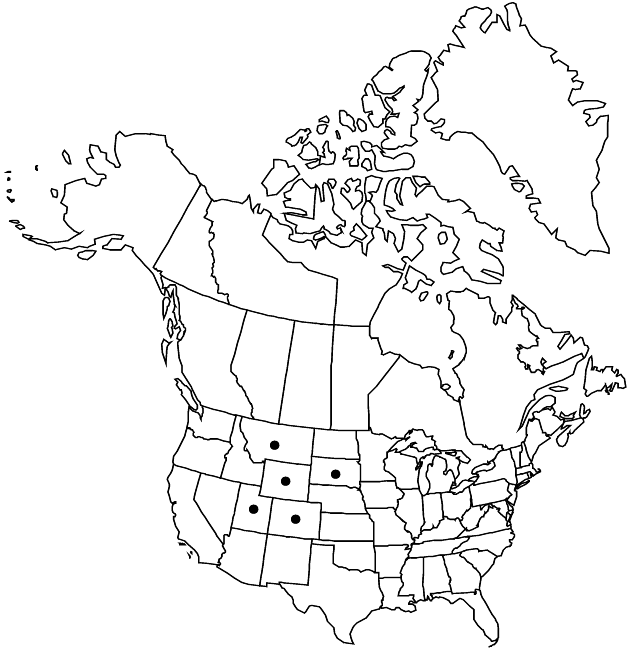Xylorhiza glabriuscula
Trans. Amer. Philos. Soc., n. s. 7: 297. 1840.
Common names: Smooth woody-aster
IllustratedEndemic
Synonyms: Aster parryi A. Gray Machaeranthera glabriuscula (Nuttall) Cronquist & D. D. Keck Machaeranthera glabriuscula var. villosa (Nuttall) Cronquist & D. D. Keck Xylorhiza glabriuscula var. villosa (Nuttall) A. Nelson Xylorhiza villosa
Subshrubs, 10–25 cm. Stems branched mostly in proximal 3/4 (leafy 2/3+ their lengths), villoso-puberulent or glabrous, eglandular. Leaf blades oblanceolate, 2.5–8 mm wide, bases attenuate, not clasping, margins flat, entire, faces villoso-puberulent or glabrous, eglandular. Peduncles 2–6 cm. Involucres 7–14 × 12–25 mm. Ray florets 12–25; corollas white. Style-branch appendages equal or shorter than stigmatic lines. 2n = 12.
Phenology: Flowering May–Jun(–Jul).
Habitat: Open sites, selenious, alkaline clays, dominated by sagebrush, saltbush, greasewood, and grasses
Elevation: 1100–2300 m
Distribution
Loading map...

Colo., Mont., S.Dak., Utah, Wyo.
Discussion
Selected References
None.
Lower Taxa
None.
